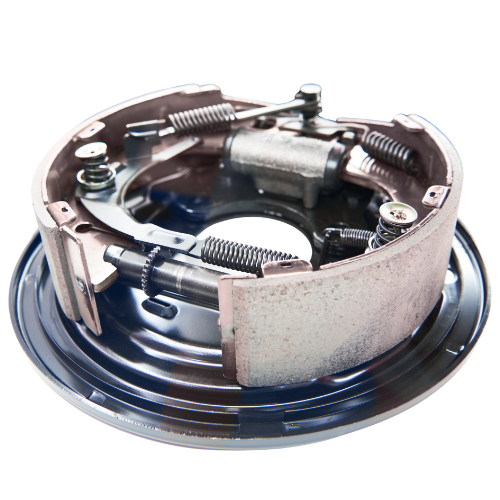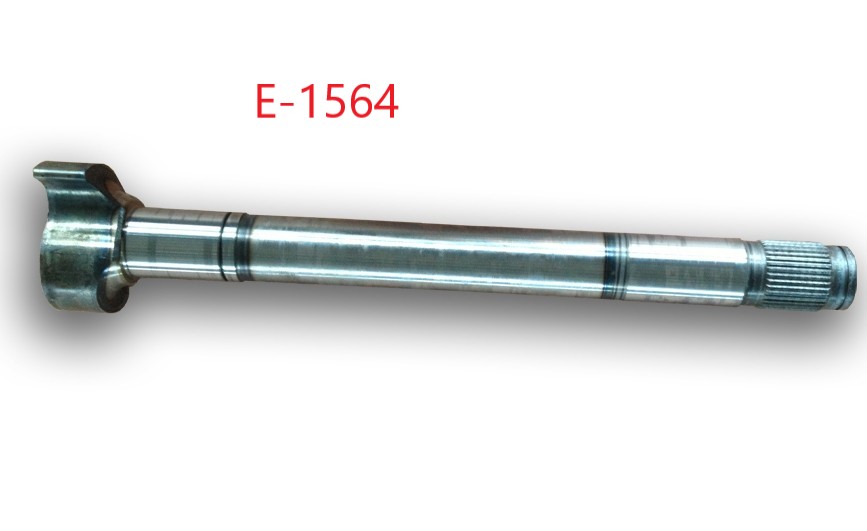Explore the four key components that make up a truck’s brake system—engineered to ensure safe, reliable, and powerful stopping performance on every road.

A heavy-duty truck's brake system is a complex network of components, but the crucial action that creates stopping force is performed by an unassuming part: the S-camshaft. This component is the vital link between the power of the air brakes and the physical friction that stops the vehicle. Working in a mechanical chain with the brake chamber and slack adjusters, the S-camshaft converts a driver's pedal input into a powerful braking force. While it may be an often-overlooked part, its proper operation and maintenance are paramount for a truck's safe performance. This article will provide a detailed look at the S-camshaft, exploring its function, signs of wear, and its essential role in a reliable braking system.
To understand the S-camshaft's role, one must first grasp its place within the larger drum brake system. A truck's air brake system is a pneumatic network that uses compressed air to create a powerful braking force. A series of components works together to translate that force from the air tank to the wheels.

The S-camshaft's unique design is a marvel of simple yet effective engineering. Its curved, "S" shape is precisely what makes it so vital and hence its name. The component is connected to the slack adjuster on one end and positioned between two brake shoes on the other.
When the brake chamber pushrod moves, it rotates the slack adjuster, which is connected directly to the S-camshaft. As the camshaft turns, the curves of its "S" shape push against rollers on the ends of the brake shoes. This leverage forces the brake shoes to pivot outward from the centre of the wheel. The shoes then make contact with the brake drum, and the resulting friction slows the wheel down.
The amount of rotation and the force applied by the S-camshaft are directly proportional to the amount of air pressure entering the brake chamber. This is why the entire air brakes system must be carefully calibrated. If any component in this chain—from the air compressor to the slack adjuster of trucks—is not working properly, the braking performance will be compromised. A technician performing a brake chamber replacement must also ensure the S-camshaft and its connections are in good condition.
The S-camshaft is a durable component, but like most truck components, it is also subject to constant stress and friction. Over time, it can wear out or become damaged. That is why recognizing the signs of wear as early as possible is essential for preventing brake system failure and ensuring driver safety. Look for these signs:
These signs underscore the need for regular inspections and a proactive approach to maintenance. While the braking force of heavy duty brake calipers is generated differently, the principle of converting driver input into stopping power is the same, and the integrity of every component is crucial.
Proper maintenance is the key to ensuring the longevity and reliable performance of the S-camshaft. Because it is in constant motion and subject to extreme forces, it requires regular lubrication and inspection to prevent premature wear. Here are some steps you could take to ensure your heavy duty truck's S-camshaft is in top condition.
While disc brakes, which use brake calipers and a rotor, have a different mechanism, the underlying maintenance principle remains: all brake components must be in good working order. A mechanic working on a variety of systems might even use a brake line bender for brake repairs on other parts of the truck, but the focus for drum brakes is on the core mechanical parts. This commitment to maintenance is what separates a reliable fleet from an unreliable one. The quality of parts from truck brake calipers manufacturers is important, but for a drum brake system, the S-camshaft is equally vital.
The S-camshaft may be a small component, but its impact on a truck's overall safety and performance is immense. It serves as the physical link between the pneumatic power of the air brakes and the crucial friction that stops the vehicle. By understanding its function, recognizing the signs of wear, and committing to a schedule of regular maintenance and lubrication, fleet operators and truck owners can ensure their drum brake systems operate with consistent and reliable power.
While modern trucks are increasingly adopting disc brakes and their more complex brake calipers, the drum brake system remains a staple in the industry, and its components must be given the attention they deserve. The performance of the brake shoes, the integrity of the brake chamber, and the precision of the slack adjuster all rely on the S-camshaft to function correctly. A proactive approach to maintaining this simple yet essential part is a proactive investment in vehicle safety.